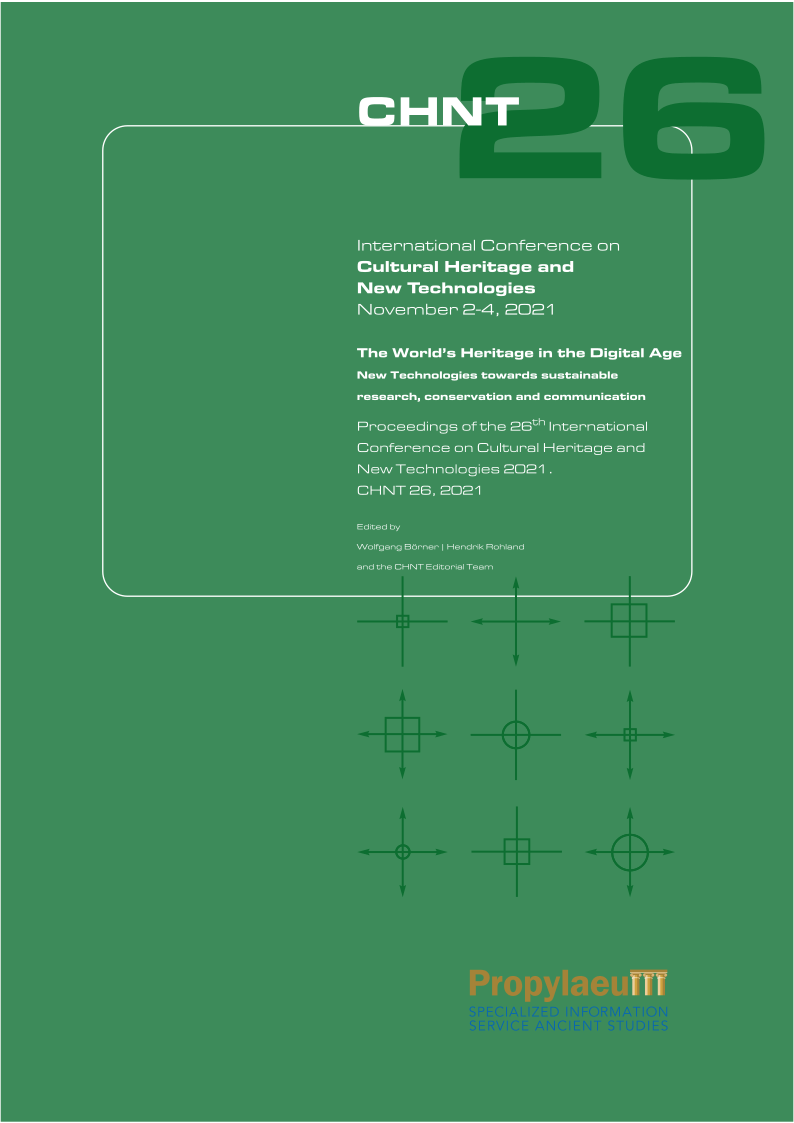Shadows analysis and viewshed georeferencing for dating of historical photographs
New possibilities for chronology studies of lost built heritage
Keywords:
Historical photograph, Photograph dating, Shadows analysis, Lost built heritageAbstract
To facilitate the use of historical photography in studies of lost heritage and its modifications over time, it is crucial to have dated images, in order to chronologically organize the visual information they contain. Although there are dating methods based on optical metadata for digital images, little attention has been paid to historical photographs, where no optical information is available, and there is insufficient data redundancy to infer them by automatic means. To address this problem, the present work proposes a method to date historical photographs based on the analysis of the shadows contained in the image, as they are known to evidence a measurable position of the sun. The key observation is that, having recovered the volumetry of the scene and its georeferencing by photogrammetric means, it is possible to project the visual information of the shadows on this geometry and thus obtain magnitudes and angles that, with the help of an astronomical formula, allows determining the time of day and the day of the year associated with them. Based on this principle, a processing workflow is proposed and validated in a case study. The results show that the method generates consistent and replicable results in different scenarios and photographic material; the margin of error has been calculated, and open issues for future studies have been identified. This confirms the validity of the approach proposed, and its feasibility to complement existing dating methods, thus improving the use of historical photography in studies of lost heritage with interest in the evolution of its interventions.
References
Abdelrahim, E.M. and Mansour, R.F. (2018). Shadow Detection and Geo-tagged Image Information Based Strategic Infrastructure Characterization. International Conference On Recent Innovations in Engineering and Technology (ICRIET).
Agafonkin, V. (2019). Suncalc. [online] GitHub. Available at: https://github.com/mourner/suncalc (Accessed 19 Aug. 2021).
Bruschke, J., Niebling, F., Maiwald, F., Friedrichs, K., Wacker, M. and Latoschik, M.E. (2017). Towards browsing repositories of spatially oriented historic photographic images in 3D web environments. Proceedings of the 22nd International Conference on 3D Web Technology.
Farid, H. (2016). Photo forensics. Cambridge. Massachusetts: Mit Press.
Fitzpatrick, C. (2008). The dead horse investigation: forensic photo analysis for everyone. Fountain Valley, California: Rice Book Press.
Guillou, E., Meneveaux, D., Maisel, E. and Bouatouch, K. (2000). Using vanishing points for camera calibration and coarse 3D reconstruction from a single image. The Visual Computer, 16(7), pp.396–410.
Meyer, W.F. and Shane, C.D. (1936). The Determination of Time from Shadows shown on a Photograph. Publications of the Astronomical Society of the Pacific, [online] 48(282), p.90.
Suazo, A. (2020). A new method for using historical street photography collections as a primary source for cartographic production. Abstracts of the ICA, 2(24), pp.1–2.
Tan, T., Sullivan, G. and Baker, K. (1995). Recovery of Intrinsic and Extrinsic Camera Parameters using Perspective Views of Rectangles. Proceedings of the British Machine Vision Conference. BMVA Press.
Wehrwein, S., Bala, K. and Snavely, N. (2015). Shadow Detection and Sun Direction in Photo Collections. 2015 International Conference on 3D Vision.
Downloads
Published
Conference Proceedings Volume
Section
License
Copyright (c) 2025 Antonio Suazo

This work is licensed under a Creative Commons Attribution-ShareAlike 4.0 International License.
The CHNT older Proceedings are licensed under the creative commons license CC BY-NC-ND 3.0.
From the issue 26 on, they will be licensed under the creative commons license CC-BY-SA 4.0


